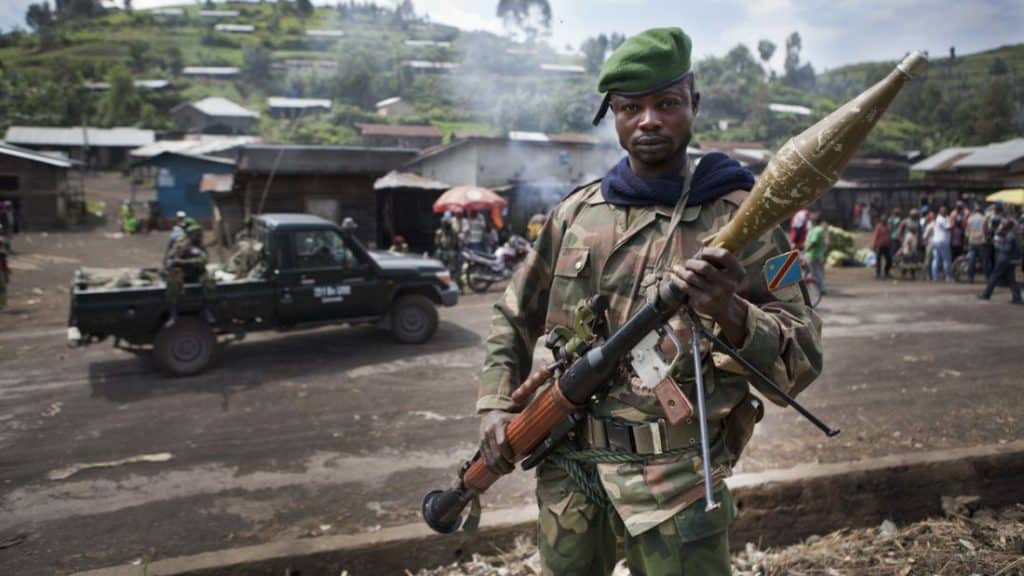The expulsion of the Rwandan ambassador from Kinshasa on October 29 launched a crisis that could lead to another war in East Africa. The actions of the Democratic Republic of Congo government were triggered by the accusation of Kigali of actively supporting M23 fighters operating in the east of the country. The situation quickly became so serious that it forced the East African Community (EAC), an organization uniting the countries of the region, to act. It quickly made the decision to create a joint East African force and send them to fight against the guerrillas. However, the situation in the DRC is so unstable that such an initiative may not solve the problems and may even become a prelude to the Third Congo War.
The eastern provinces of the DRC have been one of the most dangerous parts of Africa for years. Currently, more than one hundred paramilitary groups operate in them, many of which date back to the Rwandan genocide in 1994. Most are ethnic militias that claim to protect the interests of their community, which is threatened by everyone else. This leads to a situation where even small local conflicts immediately escalate to the level of armed confrontation.
“We denounce the hypocrisy of the international community in the face of Rwanda’s aggression.”
Thousands join anti-Rwanda protests in DR Congo’s city of Goma https://t.co/CY7tEQojEi pic.twitter.com/50QMBYcp9y
– Al Jazeera English (@AJEnglish) October 31, 2022
The current situation brings to mind the political climate before the Second Congo War, known as the Great African War. As then, there are dozens of well-organized paramilitary organizations in the political arena, some of which benefit from the support of neighboring countries. One of them is the M23, formed by Tutsis who live in the DRC. The history of M23 is as complicated as all the modern history of the country. The movement was launched on April 4, 2012, when a detachment of Congolese soldiers led by General Bosco Ntaganda, nicknamed Terminator, rejected the provisions of the March 23 settlement (hence the name of the group) and rebelled. During the fighting, the rebels managed to capture Goma, but were eventually crushed and forced to retreat. Unable to openly confront, they limited themselves to occasional surprise attacks.
UN unprepared to fight
In March 2022, the situation changed. The group consolidated its forces and launched an effective offensive, completely surprising the local security forces. The militants quickly conquered new lands, forcing the Congolese to retreat. Government troops tried to organize counter-offenses, but most strategically turned out to be a failure. The short period of success of the Congolese army ended in August 2022. M23 quickly went back to attack, regaining control of most of the area they had captured.
Unexpected success is attributed to the way the members of M23 are commanded. According to the UN representative, Bintou Keita, the fighters behave like a regular army, not a partisan operating in the jungle. In her opinion, this could mean that MONUSCO’s forces would prove unprepared to confront this type of enemy.
The deteriorating situation in the eastern DRC forced the EAC to intervene. Acting under the leadership of Kenya, which will send 900 troops to the DRC, the forces are expected to provide direct combat support to the Congolese. A regional force, made up of contingents from Burundi, Uganda, Kenya and South Sudan, is to be deployed to North Kivu, South Kivu, Upper Uele and Ituri. For obvious reasons, the Rwandans were not invited to the initiative. However, they strengthened the border posts to which additional soldiers were directed.
Le Rwanda ne peut pas entrer en guerre parce que les Congolais jettent des pierres à la frontière ou brûlent des drapeaux.Ns menons des guerres stratégiq, pas des guerres de provocat °. vous ne combattez pas une personne folle. vs les ignorez mais fixez une ligne rouge- J Kabarebe pic.twitter.com/HwsfFK5vVc
– Goma24 (@ goma24news) November 3, 2022
The appointed forces have a mandate to carry out offensive operations, thanks to which they are to actively support Congolese soldiers. It is a response to allegations of inactivity by the international community towards the suffering of the people of the DRC. The international UN stabilization mission – MONUSCO has been operating in the country since 1999. Participating contingents are not involved in offensive operations, so from the civilian perspective, MONUSCO passively observes the actions of fighters.
Simultaneously with the military operation, the EAC is attempting a political solution to the conflict. From the beginning of the intervention, the deep commitment of neighboring countries (with the obvious exclusion of Rwanda due to the nature of the M23-DRC conflict), for which the stabilization of the resource-rich eastern part of the DRC offers an opportunity for benefits beyond humanitarian considerations. Political unanimity may be one of the key factors to the success of an operation.
Success possible but unlikely
The borders of the eastern provinces of the DRC have been repeatedly violated by neighboring countries. In addition to Rwandans, soldiers from Uganda and Burundi regularly enter the Congo, chasing paramilitary organizations with bases in the DRC, which they use to launch attacks on the eastern side of the border. For decades, the Congo has become a safe haven for rebels, terrorists and smugglers.
East African forces must learn from previous missions of this type in Somalia, Mozambique and the Western Sahel. Organizing appropriate logistic and financial facilities will be a huge challenge. Regional operations also often face political problems. Uganda’s position is also in question. Relations between Kampala and Kinshasa remain cool. As with Kigali, the Congolese accuse Yoweri Museveni of actively supporting armed groups in North Kivu.
See also: Switzerland chooses new self-propelled howitzers
MONUSCO Photos, Creative Commons Attribution-Share Alike 2.0 Generic

